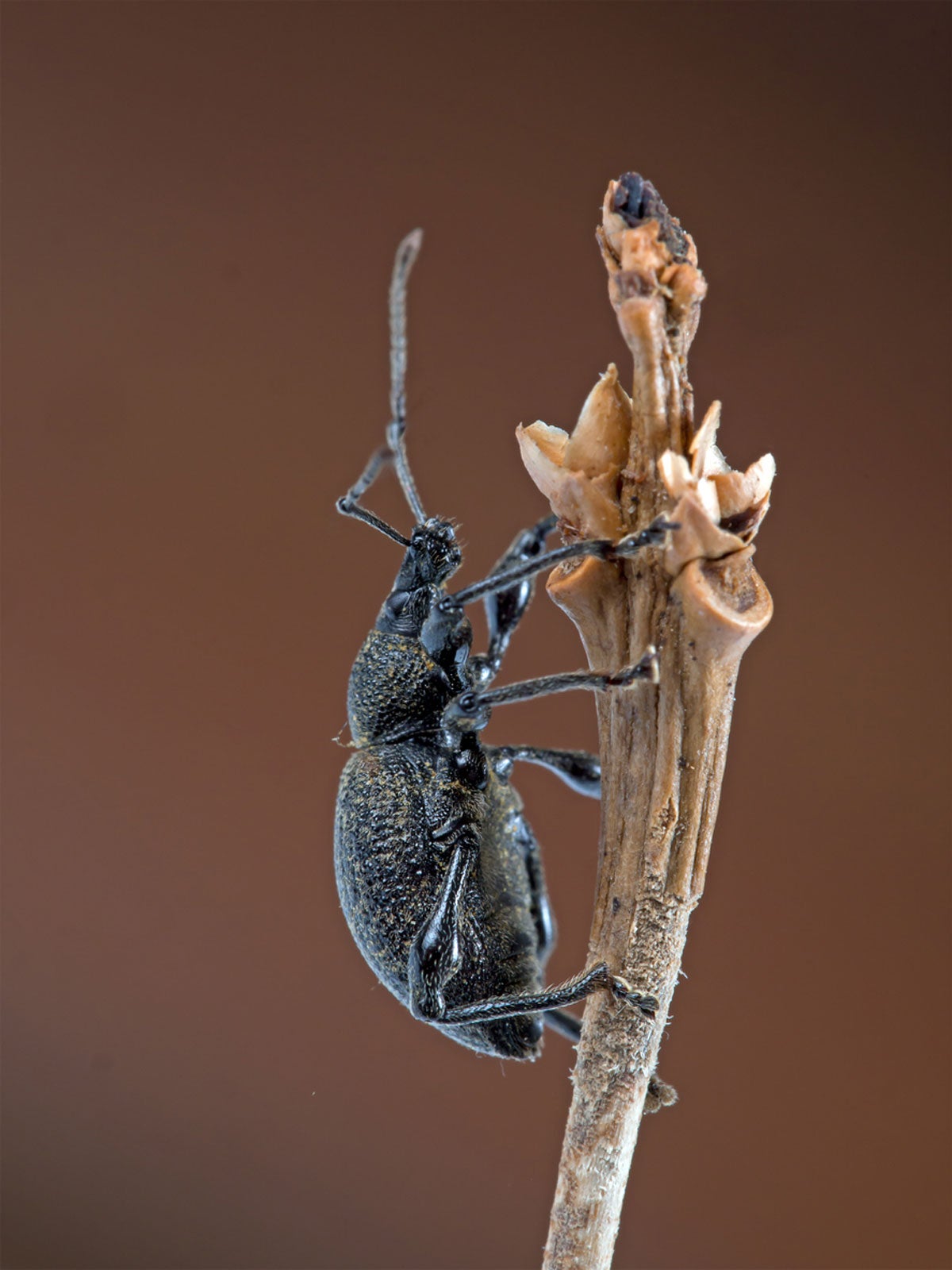Holes In Camellia Leaves: Controlling Camellia Weevils And Beetles

Camellias are gorgeous blooming harbingers of spring. Unfortunately, their beauty can be significantly marred by holes in camellia leaves. Beetles on camellias are the likely culprit, but controlling camellia weevils can be difficult to achieve since the pests feed mostly at night. If your camellia plant has holes, it is most likely the result of the camellia vine weevil or cranberry rootworm beetle.
About Beetles on Camellias
If you see holes in your camellia leaves, the likely suspects are twofold: the black vine weevil, Otiorhynchus sulcatus, or the cranberry rootworm beetle, Rhabdopterus picipes. The adult beetles feed primarily at night while their larvae feed on the root system, making them difficult to identify and control.
The black vine weevil is most detrimental in its larval stage. It feeds on a variety of broad leaf evergreens as well as greenhouse specimens. Adults are equal opportunists and ravage both herbaceous and deciduous plants, and can be found through much of the northern U.S. and into Canada.
This camellia vine weevil overwinters in the grub stage and then awakens in the spring as the soil warms. Adults feed and make holes in camellia leaves and then lay eggs at the base of the host plant in the late summer. Plants that have large numbers of grubs feeding on them can die.
The cranberry rootworm beetle feeds on camellia leaves, leaving tell-tale narrow or crescent shaped holes in the foliage. New growth is most affected.
Generally, the damage done by these pests is purely cosmetic.
Controlling Camellia Weevils
To control camellia vine weevils, use sticky traps placed on the ground around the plant. Shake the plant to dislodge the weevils. If you see adults adhere to the sticky traps, dig around the camellia and pick out the small, legless grubs. Dispatch these in a bowl of hot, soapy water.
Sign up for the Gardening Know How newsletter today and receive a free copy of our e-book "How to Grow Delicious Tomatoes".
Also, keep the area surrounding the camellia free from debris that camellia vine weevils hide in during the day.
If the insect infestation is severe and the above actions do not control it, spray the foliage with a natural insecticide like spinosad or bifenthrin, lambda cyhalothrin, or permethrin once flowering is done and feeding damage can be seen.
You should also spray and saturate the leaf litter beneath the plants. Again, do not spray during bloom time, which will affect beneficial pollinating insects and follow the manufacturer’s instructions.

Amy Grant has been gardening for 30 years and writing for 15. A professional chef and caterer, Amy's area of expertise is culinary gardening.
